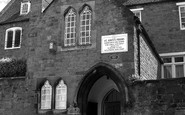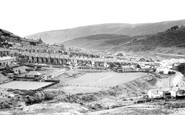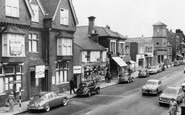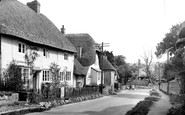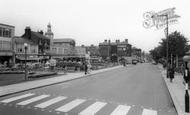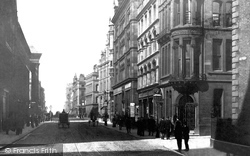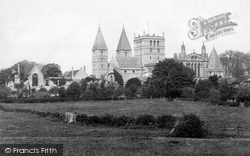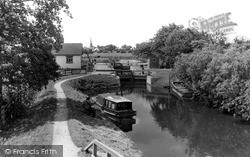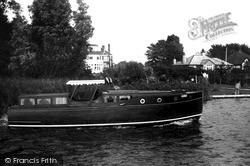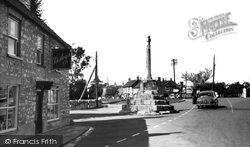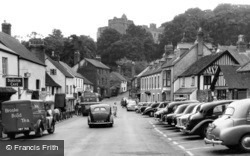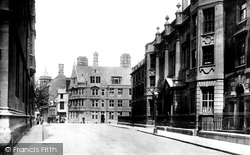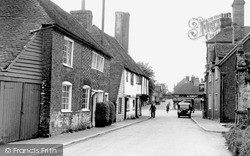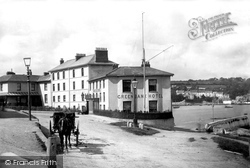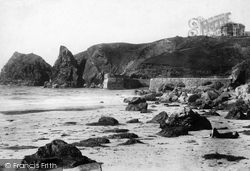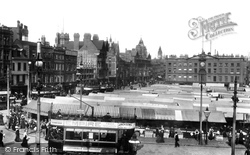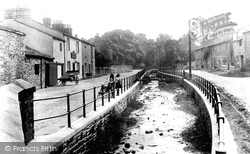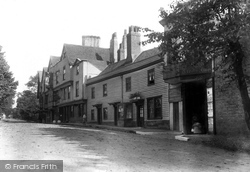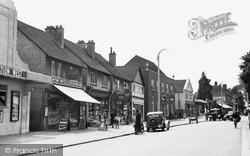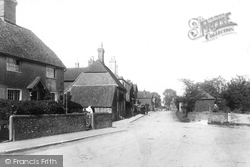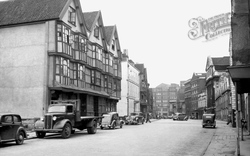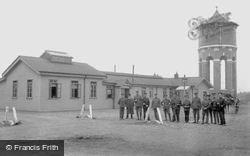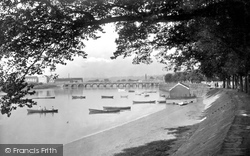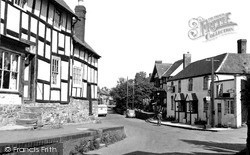Places
18 places found.
Those places high-lighted have photos. All locations may have maps, books and memories.
- Hythe, Kent
- Hythe, Hampshire
- Small Hythe, Kent
- Bablock Hythe, Oxfordshire
- Methwold Hythe, Norfolk
- Hythe, Somerset
- Hythe, Surrey
- Hythe End, Berkshire
- The Hythe, Essex
- Egham Hythe, Surrey
- West Hythe, Kent
- New Hythe, Kent
- Broad Street, Kent (near Hythe)
- Horn Street, Kent (near Hythe)
- Newbarn, Kent (near Hythe)
- Newington, Kent (near Hythe)
- Broad Street, Kent (near Hythe)
- Stone Hill, Kent (near Hythe)
Photos
360 photos found. Showing results 1,181 to 360.
Maps
101 maps found.
Books
10 books found. Showing results 1,417 to 10.
Memories
4,406 memories found. Showing results 591 to 600.
St Johns Priory (Private Girls School)
I was a pupil at St Johns Priory, and whilst I did not appreciate it at the time, it was an amazing start in life. The Nuns were incredibly strict so we all studied hard. Our classes were really small, by the ...Read more
A memory of Banbury in 1978 by
Kathryn Trevelyan Nee Bennett.
I remember the houses opposite St.Theodore's as my cousin Veronica (Non) lived in one and the "Turners" (Pat, Shirley, Roy and others) lived next door. These houses had front doors in Higher Church St, while the ...Read more
A memory of Pontycymer in 1964 by
St Mary's School
It is believed that this was a training college for Church of England vicars and then it was subsequently used as an orphanage run by the Catholic Rescue Society and staffed by the Sisters of Chariry, a French order of nuns. ...Read more
A memory of Gravesend in 1930 by
Baptist Church
The building with a clock tower on the right was the old Baptist church. It was knocked down in the early 1960s in order to widen the road (which was of course the main Portsmouth to London road in those days) and was replaced ...Read more
A memory of Waterlooville by
End Of An Era
The Heroes is boarded up and for sale in this photo. I suspect it was demolished soon after. Every one of the buildings in this photo was demolished in the 1960s to be replaced by the soulless Wellington Way arcade and adjacent shops.
A memory of Waterlooville by
My Great Granny Barker
At the far end of photo number H183005a - on the right - is a white wall. Mr and Mrs Barker lived in a one room plus a tiny kitchen downstairs, two tiny rooms up, from the 1930s until my great-grandmother died in the ...Read more
A memory of Heighington in 1944 by
Milton And Plant A Tree For 73
A memory of Milton Lilbourne, Wiltshire. Interesting reference to Plant -a-tree-for-73 as I was the person who set this up. I also attended Milton School from about 1946 to 1950 when I passed a scholarship to ...Read more
A memory of Milton Lilbourne in 1973 by
Harrogate Station Square
Here is Station Square appearing as its architects intended, an open airy town centre piece. The gardens in the foreground are the Coronation Gardens of c.1953, which complimented the Victorian square admirably. Just as ...Read more
A memory of Harrogate in 1965 by
War Years
We lived first in Vinson Close, then in Glencorse in the High Street, next door to the Commodore. My friends included Eric Cox, who lived opposite in a flat over the undertaker's; Les Forrow, whose father was manager of a grocer's ...Read more
A memory of Orpington in 1940 by
Captions
4,899 captions found. Showing results 1,417 to 1,440.
Corporation Street was the last major roadway development in the city centre made by the corporation.
Lying three miles north east of the Trent, the Minster was founded by the Archbishop of York in the early 12th century and is undoubtedly one of the most beautiful Norman buildings in England.
By the time this photograph was taken, though, only pleasure craft plied these waters. In the distance, across the water meadows, the spire-topped tower of St Lawrence's church beckons.
This beautifully-designed broads cruiser is typical of those provided by the holiday companies, who have already expanded into huge businesses.
Its lower steps have been buried by the raising of the road. Fairs were once held here, and coal barges tied up at wharves nearby.
Dunster Castle, now belonging to the National Trust, was still owned by the Luttrell family at this date; they had occupied it since medieval times.
The Hall was incorporated as a college by Royal Charter in the middle of the 18th century, though by the mid 19th century it had fallen into decay.
Next door the village grocer's shop was formerly run by the noted local archaeologist Benjamin Harrison (1837- 1921), who was responsible for the discovery of numerous early flint tools in the vicinity
Now bypassed by the M20 motorway, half a mile away, it has been able to regain some semblance of its former tranquillity.
The Green Bank Hotel, on the south bank of the Penryn River, was built in 1785 to cash in on the trade brought to the town by the mail packets.
The dramatic greenstone pinnacle of Gull Rock, or Scovarn, dominates the entrance to the cove, which is now owned by the National Trust.
This friendly, unhygienic mix was replaced in 1927 by the present Council House, in an overpowering, municipal baroque style with a giant portico and towering dome.
Owned for centuries by the Aspinall family, Pendleton was an old village when the Domesday Book was compiled.
The latter was opened in 1928 by the actress Evelyn Laye. Although much-loved, it was demolished in 1965 and replaced by shops.
The latter was opened in 1928 by the actress Evelyn Laye. Although much-loved, it was demolished in 1965 and replaced by shops.
She remained in service until the 1960s, and in 1967 was bought for £600 by the Paddle Steamer Preservation Society.
The sign by the people on the footpath advertises Woods, Coal & Coke Merchants, later to become 'Punch' Mullard's builder's yard and presently, Spinningfield House flats.
Although this church was much restored by the Victorians, it contains many interesting features such as an early font, some old tiles, and monuments to the Stuart family who lived nearby.
The church seen behind the village is 13th-century; it was largely built of flint by the monks from nearby Radegund's Abbey, itself now just a ruin.
King Street still retains many 17th and 18th century buildings, despite attempts by the Luftwaffe to destroy them.
Traditionally the army had very strong links with the aristocracy and gentry, but by the early years of the 20th century the middle classes had gained a foothold.
Behind is the church of the Holy Trinity, rebuilt in 1869-70 by the Weymouth architectJohn Hicks.
By the time this picture was taken, the trees had gown to an enormous size and needed surgery.
The survival of so many timber buildings is a reminder that by the 17th and 18th centuries, the village's fortunes had declined.
Places (18)
Photos (360)
Memories (4406)
Books (10)
Maps (101)

